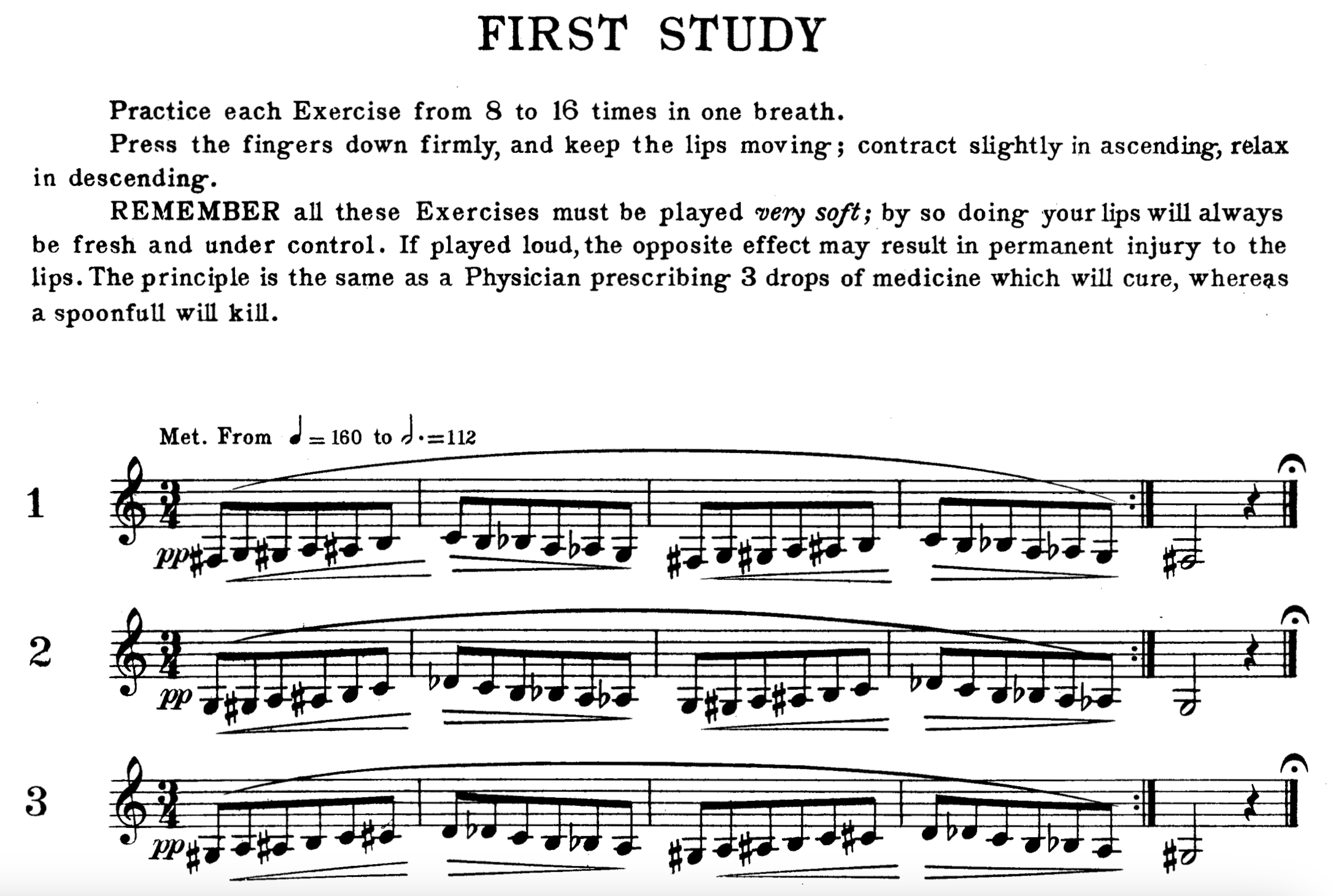Last month, I spent about three weeks playing lines from Clarke’s First Study every day.

From First Study in Clarke, Technical Studies for the Cornet
There are 25 lines written out in this study, with the last line topping out at high C (C6).
I play the lines at about dotted half note = 50, very softly, and with about 4 repeats in one breath.
I picked this exercise with several improvement goals in mind.
Keeping fingers on the keys
I have a strong tendency to let my fingers fly off the keys, an excessive motion that (as Hazel often points out) slows things down and makes valve timing more difficult. I don’t really need to look at the page while playing this, so I can instead observe my fingers and see how they are moving in the transitions from note to note.
Avoiding tension in hand and wrist
I also tend to accumulate a lot of hand and wrist tension when I play a long set of valve movements. This causes me to tire and be unable to maintain the tempo. This exercise definitely makes it obvious if that is happening!
Smoothing out some trouble spots
I have trouble with note transitions at around G4, A♭4, A4, and B♭4. Using traditional fingerings, these involve multiple thumb and finger combinations, which I struggle to do without extra wrist movement that causes the horn to move around on my face. There is also the the air resistance change when going between the F and B♭ horns. Because of these issues, my note transitions in this region are often a bit choppy, and sometimes the tempo is not completely steady.
Early results
I noticed improvements in all these areas within about two weeks of daily practice. I can now keep my fingers on the keys, except for a bit of remaining fly-away with finger 3.
When I first started, wrist and hand tension caused me to tire after only 7 or 8 lines, and now I’m able to stay tension-free and am no longer limited by that.
It took longer, but I’m start to see smoother note transitions in my trouble area as well.
What to do next
It takes a long time to work through this entire set, and there are lots of other things (such as orchestra parts!) that I need to be working on. I’ve already stopped trying to do the entire set every day. One possibility is to do just a few lines a day, concentrating on different ranges.
Another idea is to add the top octave of lines to my set of high-range exercises.
Certainly, if I notice finger issues or hand tension again, I can come back to this study for a refresher.